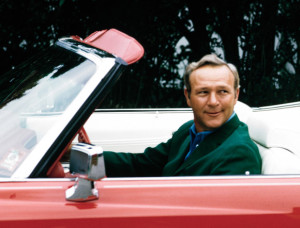by Jeff Skinner
The PGA Tour moves to the mainland this week as the Humana Challenge kicks off on Thursday in the California desert. The newly named Humana started as the Thunderbird Invitational in 1954 but most of us who still struggle at texting know it as the Bob Hope. From 1965 through 2011 Hope’s name was attached to it in one form or another.
In the 70’s all the heavy hitters spent time carousing with Hope and his celebrity friends. Arnold Palmer and Johnny Miller won it twice during the 70’s. Hubert Green won in ‘74 and Jack Nicklaus, Raymond Floyd, Lee Trevino all took home second place checks during that golden decade.
 In February’s Golf Digest, Tom Callahan chats with some of the professionals of the day. As expected the “older generation” has a different perspective on most things golf these days.
In February’s Golf Digest, Tom Callahan chats with some of the professionals of the day. As expected the “older generation” has a different perspective on most things golf these days.
Cory Pavin, a voice stuck between the 70’s generation and today’s current crop says it this way, “If you want to say yesterday was more about feel, and today is more about power, I’ll buy that.”
Here are some very interesting comments from a generation of golfers that may have been playing golf back in the day but it’s not the same game as today’s players.
“We played golf,” says Hubert Green. “Today’s players just golf. It’s a semantic distinction, but I think you know what I mean.”
This is Jack Nicklaus berating his Ryder Cup Team after they lost at Muirfield Village:
“You guys just don’t know how to win,” Captain Nicklaus scolded his Ryder Cup team between the closing ceremony and the dinner in 1987, when a second straight European victory flipped the balance of power. “How many matches were we leading going to 18 and didn’t win them? Look at you, Payne Stewart. You make all this money on tour, but how many tournaments have you won? Why don’t you win more? You guys need to learn how to win, or you’re going to continue getting beaten in this thing.”
“There wasn’t any sugarcoating on it,” Stewart said 12 years later. “I’ll tell you, that speech was good for me.” He promptly won the first of his three major titles in a heartbreakingly short career.”
Raymond Floyd on The King, Arnold Palmer:
To Floyd, Palmer represents something valuable that is gone from the game. Or, if not entirely gone, at least diminished. “At my first Masters, I wore a pair of madras pants. ‘C’mere a minute,’ Arnold called me over in the locker room. ‘Son, this isn’t just another golf tournament,’ he said. ‘This is different. This is special. Wear a more respectful pair of pants tomorrow.’ I did, the next day and from then on. Do you think anyone today would do that?”
Tom Watson on a different kind of mentoring:
Tom Watson calls this “leading from the top.” Tom turned pro in 1971 but took three years to grasp Sundays on tour (and even a little longer when it came to U.S. Opens). “At Colonial one time, where they had free beer in the locker room, I was sitting around with a bunch of the guys when Chi Chi Rodriguez walked in. He started going on and on about how well I was playing and what a good young player I was. Julius Boros looked up at me and said, ‘I’d like to have the money you’ve pissed away already.’ ”
You’d think that would have stung Watson, but it didn’t. He took it as coming from the top. In fact, Tom considered it a kind of compliment, a tough one. “He was telling me, ‘You’re too good a player to settle for just good results. Get back out there and win.’ ”
A European view of the men that changed the game in the 70’s:
‘Our greatest generation,” says Roger Chapman, speaking for the European Tour, “was probably a decade behind yours: Lyle, Olazabal, Langer, Faldo, Woosnam, the core of the Ryder Cup team. Of course, it all traces to Ballesteros in 1976 [when a 19-year-old came out of Spain and nowhere to tie for second at Royal Birkdale] and to his first Open Championship, in ’79. On Europe’s side, everything goes back to Seve. He was our inspiration. He was our leader.”
Cup team. Of course, it all traces to Ballesteros in 1976 [when a 19-year-old came out of Spain and nowhere to tie for second at Royal Birkdale] and to his first Open Championship, in ’79. On Europe’s side, everything goes back to Seve. He was our inspiration. He was our leader.”
“I played with Seve early in my career, in Switzerland,” Chapman says, “and I was missing the cut–a few shots over the cut line with four or five holes to play. I’m sure I was looking a bit down. He came over to me and whispered, ‘Hey, player, why you not try?’ ‘I’m trying,’ I told him. ‘Try harder,’ he said. ‘There are so many birdies out here. Come on!’ All of a sudden I go birdie, eagle, birdie, par to make the cut on the number. I look across the green, and there he is, pumping those fists. Not for himself, for me. Fantastic. I can’t tell you what it meant to me then, and now.”
Peter Jacobsen talks equipment and philosophy:
“I remember one time Craig Stadler found a driver in a barrel. Craig had no idea what the shaft was. But he liked it. He hit it long, and he hit it straight. I think he won his Masters with it. Nowadays, you go and get fitted for clubs just like you do for a tuxedo before a wedding.
“Now you’re talking philosophy,” Jake says. “What you mean is, what have we lost? Well, I’ll tell you.
“There’s no search. There’s no journey. I’ve always agreed with Michael Murphy [Golf in the Kingdom] that the game of golf is less about the contact point of the club and the ball than it is about the in-between, the walking from one shot to the next. It’s not the shots themselves. It’s what goes on in your mind between shots. I’m certain this was truer back in the ’70s than it is today.”
So much money has changed player’s lives long before they win:
‘Money changes everything,” Don January says. “Once, you had to be a world-beater just to make a living at tournament golf. You don’t have to be even a real good player to make a hell of a lot of money now.”
“Money corrupts desire,” Tom Watson says.
The Jackie Burke Test:
“I’m coming up on 9-oh January 29,” says the Masters and PGA champion, Jackie Burke. “Ninety years. So I guess I’ve seen a little golf since I sat down on my dad’s bag and listened as he gave his lessons. I captained Palmer, Nicklaus, Casper, Trevino and that crowd in the ’73 Ryder Cup, so I know the era pretty good. You wouldn’t be able to guess one of the things I really liked about them: You could read their autographs. They were legible. To me, that showed a decent consideration, to the public. Heck, in those days, that was about the only thing they had to do except not drop dead at a Ryder Cup.”
Watching a genius:
When Jackie’s team arrived at Prestwick, Scotland, in an early-morning rain, 10 of the players went straight to bed. Trevino and J.C. Snead, Sam’s nephew, went to the practice tee at Muirfield. One of about 30 spectators standing behind Trevino was a 13-year-old Scot named John Huggan, who five years later would be the Scottish Boys champion, and 40 years later would be a flinty golf writer who doesn’t like to let on how much he loves the game. But sometimes he can’t help it.
“Trevino kept calling his shot and then hitting the shot,” Huggan says. “The best part was that there was a small stick stuck in the ground about 100 yards away. He went, ‘Watch this.’ Then he carved a little wedge miles away up in the air, seemingly into the clouds, and it came down two feet from that stick. Then with the same club he deliberately thinned a ball along the ground and it stopped right next to the stick. I mean, tell me there’s one guy on tour who can do that now.”
No, Trevino was a genius.
